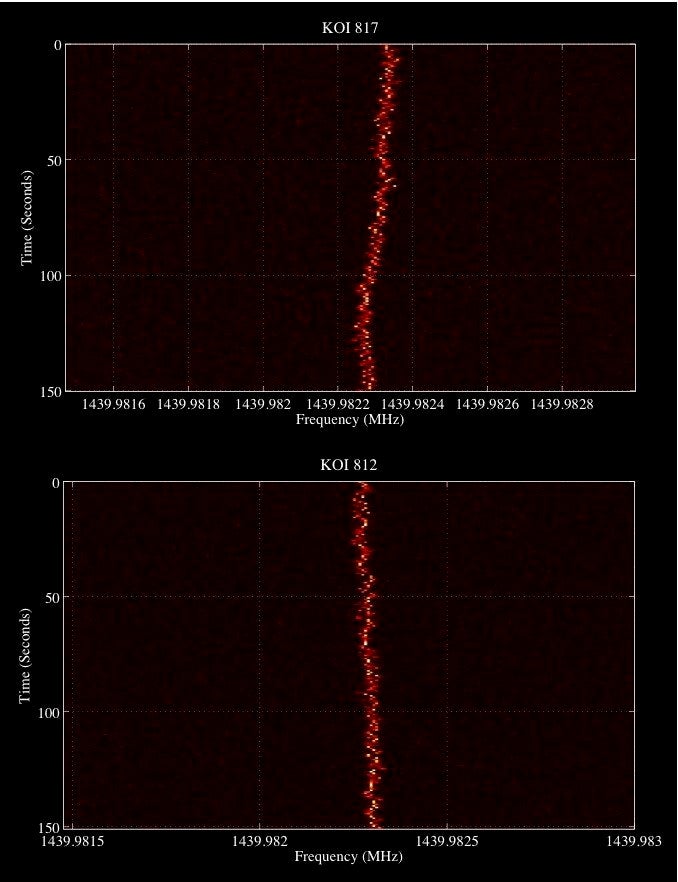
Don't start making tinfoil hats yet. The 12 intriguing signals published this week by SETI researchers at UC Berkeley weren't created by aliens, despite what some commentators have said.
The 12 'candidates' are signals that "look similar to what we think might be produced from an extraterrestrial technology." Berkeley SETI made it clear that "these signals are interference," but that didn't stop the amateur speculation on Twitter.
Highlights from the Twitter reactions included: "SETI DETECTS ALIEN SIGNAL, AGAIN; HAWKING WARNS AGAINST ALIEN CONTACT From PHANTOMS & MONSTERS...," "Anyone else hearing whispers the #SETI guys have found a candidate signal in the Kepler data? The SETI site seems logjammed atm" and "Alien signal? Could this be ET running up a mobile bill? Can [French President Nicolas Sarkozy] auction spectrum on other planets?"
But the Berkeley team would need much more data to confirm that signals such as these really came from an intelligent source. The false signals, known as radio-frequency interference (RFI), are the bane of any radio astronomer's existence, and can be caused by everything from satellites to aircraft radar to WIFI. As Berkely SETI Project Scientist Andrew Siemion told the Huffington Post, "Any human technology that produces radio emission in a [frequency] band radio astronomers observe is considered RFI."
SETI scientists use a variety of techniques to rule out candidates, including "requiring that the signal be coming from only a single direction on the sky and looking for changes in the signal caused by the relative motion of the Earth with respect to a very distant transmitter," according to Siemion.
Siemion went on to explain the unique dilemma SETI scientists face in looking for alien-made signals: they'd probably look a lot like human-made signals. Where other astronomers can reject data that appears technologically produced, such data is the heart of SETI observation, and trying to pick out a real ET signal from among the RFI is difficult. A large part of a SETI scientist's work is ruling out potential candidates to avoid making any rash announcements. With all this effort devoted to parsing real signals from fake, it's cringe-worthy to imagine a non-SETI astronomer--looking at (say) quasars--coming across a genuine alien transmission and ignoring it because it just looks like RFI.
Even though the vast majority of candidate signals can be attributed to RFI, errors can still produce interesting results. One 1967 signal, which was thought to be E.T. because it bleeped such a consistent rate, was finally identified as a new type of celestial body, called a pulsar.
Antony Hewish, who supervised that research and later won a Nobel Prize for it, made a relevant point: "It is an interesting problem - if one thinks one may have detected life elsewhere in the universe how does one announce the results responsibly? Who does one tell first?" Twitter, clearly, isn't the answer.
A document called the "Seti Post-Detection Protocol" exists for just such an occasion, but Siemion is skeptical that it will be followed in the event of a major observation. They'd try quietly to verify it, but "Even if we were very careful about who knew what we were doing," he says, "if [Berkeley SETI Chief Scientist] Dan Werthimer or I showed up at Arecibo [Observatory] and were awarded immediate 'Director's discretionary time' on the telescope, people would probably start to talk."
Disclosure: I worked at Berkeley SETI in the Spring of 2010 as a technical writer.